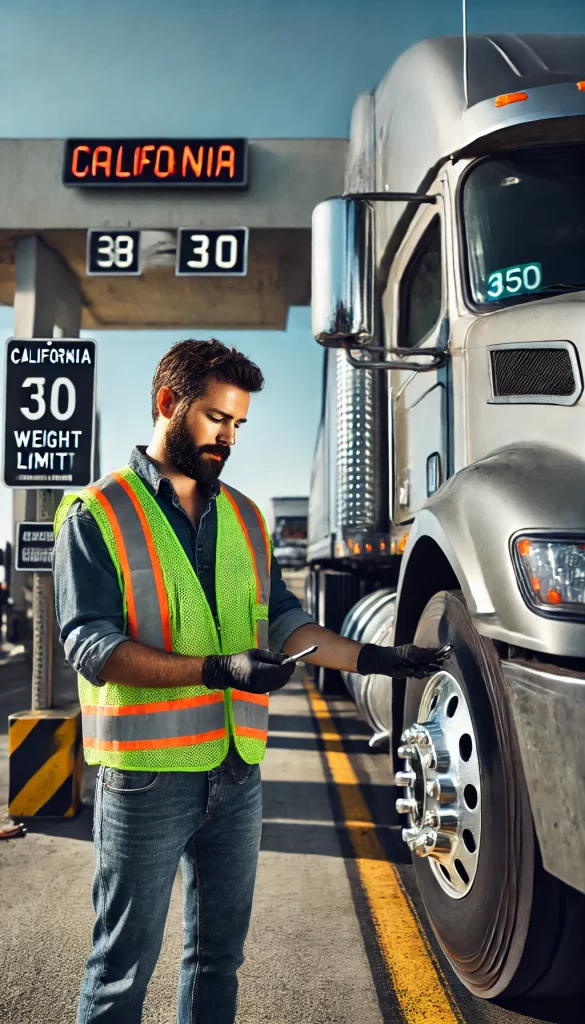- admin
- Car Accident, Civil Litigation, Personal Injury, Traffic Accidents
- September 30, 2024
California Big Rig Laws: Ensuring Safety on the Road
California, with its vast highways and extensive transportation network, is a hub for commercial trucking. Big rigs, also known as semi-trucks or 18-wheelers, play a crucial role in the state’s economy by transporting goods across long distances. However, due to their size, weight, and power, these vehicles pose significant risks if not operated within the bounds of strict regulations. To ensure road safety and promote accountability, California has implemented various laws that govern big rigs. These laws cover several areas, including licensing, weight limits, hours of service, vehicle maintenance, and liability in the event of an accident.
In this article, we will explore the primary laws and regulations that apply to big rigs in California and the impact they have on both the trucking industry and public safety.
1. Commercial Driver’s License (CDL) Requirements
Operating a big rig in California requires a Commercial Driver’s License (CDL). The California Department of Motor Vehicles (DMV) mandates that drivers must undergo specialized training and pass both a written knowledge test and a practical skills test to obtain a CDL. The type of CDL required depends on the type of vehicle and cargo being transported:
- Class A CDL: Required for operating combination vehicles, including big rigs with trailers that exceed a certain weight.
- Class B CDL: Required for operating single vehicles that exceed 26,001 pounds.
- Endorsements: Drivers may need specific endorsements, such as a hazardous materials (HazMat) endorsement, depending on the cargo they are hauling.
Drivers must meet specific medical requirements to ensure that they are physically capable of handling such large vehicles. They are subject to regular medical examinations to maintain their CDL, and failure to meet these standards can result in the suspension or revocation of their license.

2. Hours of Service (HOS) Regulations
Fatigue is a leading cause of big rig accidents, which is why the Federal Motor Carrier Safety Administration (FMCSA) has established Hours of Service (HOS) regulations that apply to big rig drivers in California. These rules limit the number of hours a driver can operate a vehicle without taking mandatory rest breaks to prevent accidents caused by drowsy driving.
The main HOS regulations include:
- 11-Hour Driving Limit: Drivers are allowed to drive for a maximum of 11 hours after taking 10 consecutive hours off duty.
- 14-Hour Rule: A driver cannot operate their vehicle beyond the 14th hour after starting their workday, even if they have not driven the full 11 hours.
- 30-Minute Break: Drivers must take a 30-minute break after eight hours of driving.
- 60/70-Hour Limit: Drivers cannot exceed 60 hours of driving within seven consecutive days or 70 hours within eight consecutive days.
Violating these HOS regulations can result in fines for both the driver and the trucking company and may even lead to disqualification from driving a commercial vehicle.
3. Weight Limits and Load Regulations
California imposes strict weight limits on big rigs to prevent damage to roadways and to reduce the risk of accidents caused by overweight vehicles. The state follows the federal weight limit standard of 80,000 pounds for the total weight of a commercial vehicle and its cargo. However, this limit can be lower depending on the number of axles and the type of roadway.
Big rig drivers and companies must ensure that their loads are properly secured and evenly distributed to prevent shifting during transit. This is crucial for maintaining vehicle stability, especially when traveling on winding roads or through mountainous regions. Overloaded trucks or improperly secured loads can lead to rollovers, jackknifing, or cargo spills, all of which pose a danger to other road users.
Trucks found to be overloaded at California’s weigh stations can face hefty fines, and drivers may be forced to offload excess cargo before continuing their journey.
4. Vehicle Inspection and Maintenance Requirements
To ensure that big rigs remain in safe operating condition, California law requires regular inspections and maintenance. Trucking companies are responsible for conducting daily inspections, and drivers must complete a Driver Vehicle Inspection Report (DVIR) before and after each trip. This report ensures that critical vehicle components, such as brakes, tires, lights, and steering, are in proper working condition.
Additionally, the California Highway Patrol (CHP) conducts random roadside inspections and can issue citations for vehicles with mechanical violations. Trucks that fail to meet safety standards may be placed out of service until repairs are made.
Neglecting vehicle maintenance can result in serious accidents, and trucking companies that fail to comply with these regulations can be held liable for any damages or injuries caused by a malfunctioning truck.
5. Liability in Big Rig Accidents
California follows a fault-based system for determining liability in big rig accidents. This means that the party responsible for causing the accident is liable for the damages incurred by the other parties involved. Given the size and weight of big rigs, accidents involving these vehicles often result in severe injuries or fatalities, leading to substantial legal claims.
In the case of a big rig accident, multiple parties may be held liable, including:
- The driver: If the driver was negligent (e.g., speeding, driving under the influence, or violating HOS regulations).
- The trucking company: If the company failed to properly maintain the vehicle or pressured the driver to exceed legal driving hours.
- The manufacturer: If a defect in the truck or its parts contributed to the accident.
California’s comparative negligence rule allows injured parties to recover damages even if they were partially at fault for the accident. However, their compensation will be reduced by their percentage of fault. For example, if a driver is found to be 20% at fault for an accident, they can still recover 80% of their damages.
6. Environmental Regulations
California is known for its stringent environmental regulations, and big rigs are no exception. The state has implemented laws aimed at reducing emissions from commercial vehicles, particularly diesel-powered trucks, which are a significant source of air pollution.
The California Air Resources Board (CARB) enforces regulations that require trucking companies to use cleaner, more fuel-efficient vehicles. Some of these regulations include:
- Truck and Bus Regulation: Requires trucks to meet specific emissions standards or be retrofitted with devices to reduce pollutants.
- Idling Restrictions: Limits the amount of time big rigs can idle to reduce emissions, with exceptions for extreme weather conditions.
Failure to comply with CARB regulations can result in fines and other penalties, and non-compliant trucks may be banned from operating in the state.
Conclusion
California’s big rig laws are designed to ensure the safety of all road users while minimizing the environmental impact of commercial trucking. From licensing requirements and hours of service regulations to weight limits and vehicle maintenance standards, these laws hold drivers and trucking companies accountable for operating safely and responsibly. Additionally, in the event of an accident, California’s fault-based system and strict liability rules help ensure that those responsible are held accountable for any damages or injuries caused. By adhering to these regulations, big rig drivers and companies can contribute to safer roads and a cleaner environment for all Californians.

